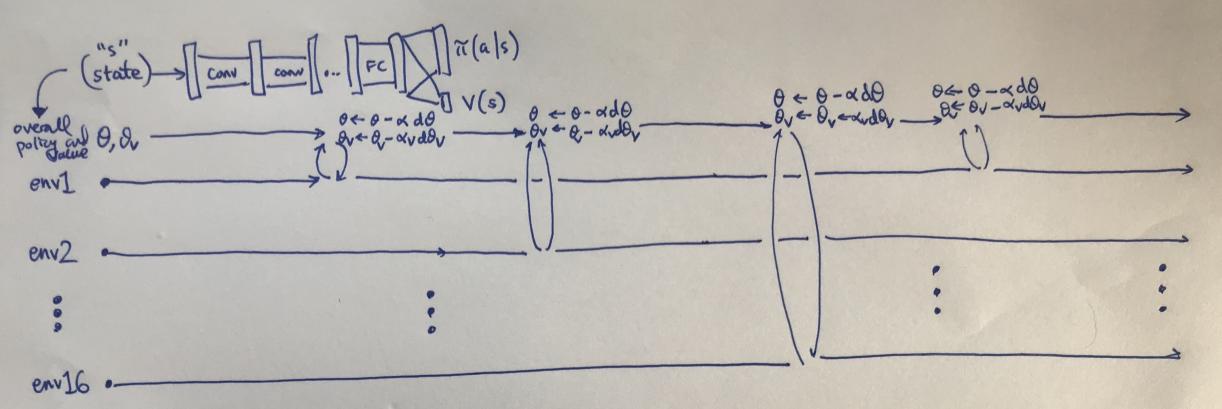Advantages and Disadvantages of Actor-Critic Methods
Actor-critic methods are a class of reinforcement learning algorithms that combine an actor, which learns to select actions, and a critic, which learns to evaluate the value of those actions. This combination allows actor-critic methods to learn more efficiently and effectively than other reinforcement learning algorithms, particularly in continuous action spaces and when the exploration-exploitation trade-off is important.

Advantages Of Actor-Critic Methods
Sample Efficiency
Actor-critic methods can learn more efficiently from a limited number of samples compared to other reinforcement learning algorithms. This is because the critic provides a value estimate for each action, which helps the actor learn faster. The critic's value estimates are constantly updated as the actor explores new actions, which allows the actor to quickly identify the actions that are most likely to lead to high rewards.
Continuous Action Spaces
Actor-critic methods are well-suited for continuous action spaces, where the agent can take any value within a range. This is because the actor can directly output actions without the need for discretization. This makes actor-critic methods more efficient and effective than other reinforcement learning algorithms, which often require discretization of the action space.
Exploration-Exploitation Trade-off
Actor-critic methods can balance exploration and exploitation more effectively than other reinforcement learning algorithms. Exploration is the process of trying new actions to find better rewards, while exploitation is the process of taking the actions that are known to be good. Actor-critic methods use the critic's value estimates to identify actions that are likely to lead to high rewards, while the actor explores new actions to find even better rewards. This allows actor-critic methods to find the best possible policy more quickly and efficiently.
Policy Gradient Methods

Actor-critic methods are based on policy gradient methods, which are known for their simplicity and effectiveness. Policy gradient methods directly optimize the policy, which makes them more efficient than value-based methods. Value-based methods learn the value of each state, and then use this information to select actions. Policy gradient methods, on the other hand, learn the policy directly, which is more efficient and effective.
Disadvantages Of Actor-Critic Methods
Variance
Actor-critic methods can suffer from high variance in the early stages of learning. This is because the critic's value estimates can be inaccurate, which can lead the actor to make poor decisions. As the actor learns more, the critic's value estimates become more accurate, and the variance decreases. However, in the early stages of learning, the variance can be a significant problem.
Local Minima

Actor-critic methods can get stuck in local minima, where the policy is not optimal but the critic is unable to identify better actions. This can prevent the agent from finding the best possible policy. Local minima are a common problem in reinforcement learning, and there is no easy solution. However, there are a number of techniques that can be used to reduce the risk of getting stuck in a local minimum, such as using a variety of exploration strategies and carefully tuning the hyperparameters.
Hyperparameter Tuning
Actor-critic methods have a number of hyperparameters that need to be tuned carefully. These hyperparameters include the learning rate, the discount factor, and the entropy regularization coefficient. Finding the optimal hyperparameters can be challenging and time-consuming. However, it is important to tune the hyperparameters carefully in order to get the best possible performance from an actor-critic method.
Off-Policy Learning
Actor-critic methods are typically off-policy, meaning that they can learn from data that was not generated by the current policy. This can lead to instability and slower convergence. Off-policy learning is a common problem in reinforcement learning, and there is no easy solution. However, there are a number of techniques that can be used to reduce the risk of instability and slow convergence, such as using a variety of exploration strategies and carefully tuning the hyperparameters.
Actor-critic methods offer a number of advantages over other reinforcement learning algorithms, including sample efficiency, the ability to handle continuous action spaces, and the ability to balance exploration and exploitation effectively. However, actor-critic methods can also suffer from high variance, local minima, and hyperparameter tuning challenges. Overall, actor-critic methods are a powerful and effective class of reinforcement learning algorithms that can be used to solve a wide variety of problems.
Recommendations
Actor-critic methods are a good choice for problems with continuous action spaces, where exploration is important, and where data is limited. Actor-critic methods are also a good choice for problems where the policy is likely to change over time.
Future Research
There are a number of areas where future research on actor-critic methods is needed. These areas include:
- Developing new methods for reducing variance and local minima.
- Developing new methods for hyperparameter tuning.
- Developing new methods for off-policy learning.
- Applying actor-critic methods to new domains, such as robotics and natural language processing.
Actor-critic methods are a promising area of research with the potential to make significant contributions to the field of reinforcement learning.
YesNo

Leave a Reply